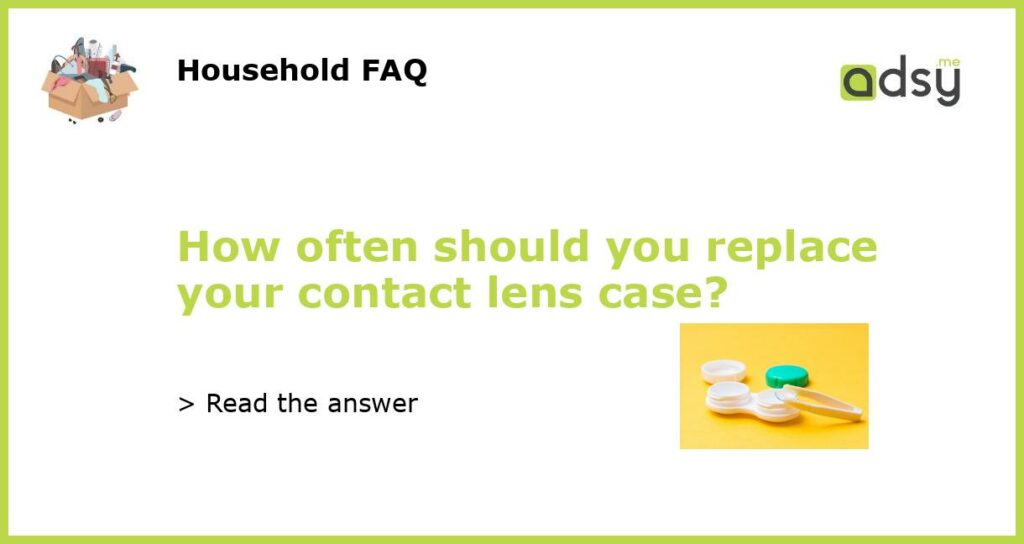The Importance of Replacing Your Contact Lens Case
Contact lenses are a popular alternative to glasses, allowing individuals to see without obstructive frames. However, with wearing contact lenses comes the responsibility of keeping them clean and replacing them regularly. But one commonly overlooked item is the contact lens case.
When Should You Replace Your Contact Lens Case?
Experts recommend replacing contact lens cases and purchasing new ones every three months. Even if you clean the case regularly, it’s still exposed to bacteria from your eye and can build up over time. By replacing your contact lens case every three months, you’re reducing your risk of eye infections and diseases.
Signs You Should Replace Your Contact Lens Case
However, sometimes it’s necessary to replace your contact lens case sooner than three months. If you notice any cracks or chips, it’s vital to throw it out and purchase a new case. Damaged cases can compromise the cleanliness of your contacts and lead to infections. Additionally, if you have been sick or experienced an eye infection, it’s recommended to toss out your current case and start with a fresh one.
How to Properly Clean Your Contact Lens Case
Cleaning your contact lens case regularly is essential in reducing the risk of bacteria build-up. After removing your contacts, rinse your case with a sterile contact lens solution and dry it with a clean towel. Avoid using water to clean your case as it can harbor bacteria. It’s also essential to store your case in a clean and dry place to avoid contamination.
The Bottom Line
Taking care of your contact lenses goes beyond just wearing them, it’s crucial to keep everything sanitary to avoid eye infections and diseases. Replacing your contact lens case every three months and cleaning it regularly is an easy way to maintain eye health. By following these simple steps, you can continue to enjoy the benefits of contact lenses while keeping your eyes safe and healthy.






